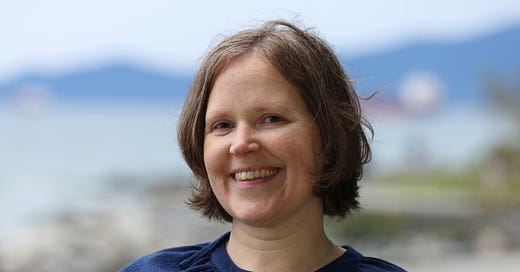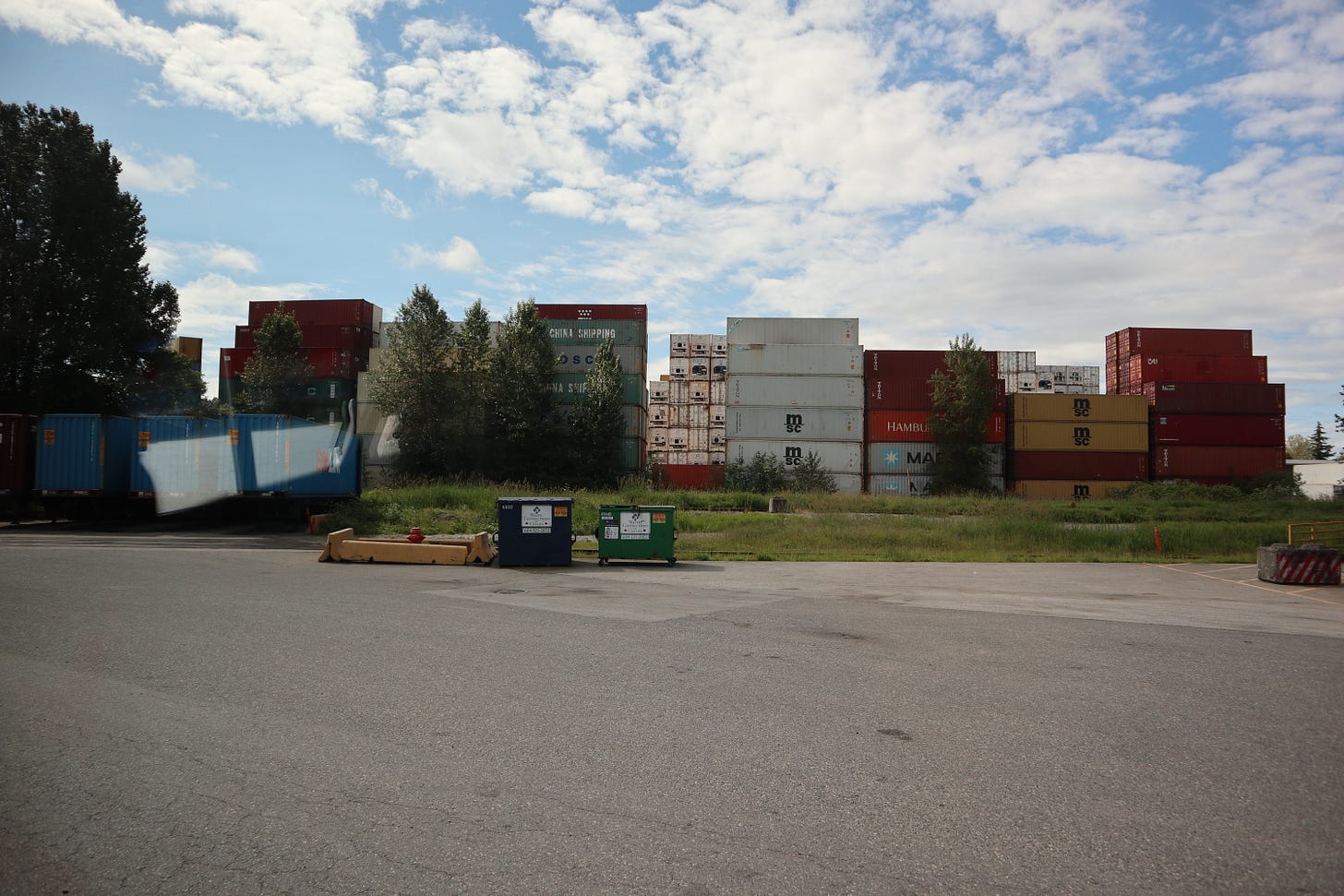Brook Houglum has published poems in magazines such as Tinfish, Event, and Interim. She teaches at Capilano University and lives in Vancouver on unceded Skwxwú7mesh, xʷməθkʷəy̓əm, and səl̓ílwətaʔɬ lands. Her chapbook debut, Anthronoise, appeared with above/ground press in October 2024, and a second chapbook, Inventory, appeared with above/ground press in April of this year.
You’ve just published your second title through the press, not long after your above/ground press debut. How do these titles relate to each other, if at all? Were these titles deliberately composed as chapbook-sized units, or part of larger, book-length manuscripts? How do you see your chapbooks in terms of your larger work?
Both chapbooks are sections of a larger manuscript that I’ve been working on for several years, which is focused on local and global shipping industry environments. I began the project by reading a lot about how shipping and ocean industrial noise impacts marine creatures, and wrote about that context in the pieces collected in the first chapbook, Anthronoise. The second chapbook, Inventory, documents and catalogues things that we own and use, in the context of a city—a place of things. A line can be drawn from Inventory to Anthronoise: our ocean transport of components & products is really loud underwater.
What is it about the form of the chapbook that appeals for these projects? Even though these two pieces will eventually help form a full-length collection, what do you think the form of the chapbook provides or allows that a full-length collection might not?
I think a chapbook provides a close-up or concentrated view of a smaller body of work. Maybe you read a chapbook a few times through in one sitting. Maybe a chapbook is more immediate, as in, the draft time and publication time are often closer than with a full-length. I think that what drew me to the chapbook for these sections, though, is that a chapbook is a lovely format for a sequence or series. In a sequence where meaning accretes and shifts across several poems, a chapbook might also set up a more interesting reading experience—or make more sense—than if poems from the sequence were published individually.
How has the larger manuscript been shaping itself? Had you any models for the structures you’ve been working on?
Anthronoise and Inventory are two of several sections /series in the manuscript. In terms of models, as a reader, I’m always interested in writers’ experiments and in how poets go about making their poems. In different ways and over many years, writers like Gertrude Stein, Lorine Niedecker, Robert Creeley, Muriel Rukeyser, C.D. Wright, Bhanu Kapil, Arthur Sze, Lisa Robertson, Jackson MacLow, Claudia Rankine, Craig Santos Perez, Eleni Sikelianos, Souvankham Thammavongsa, Jen Currin, Kim Minkus, angela rawlings, Rita Wong, Jordan Abel, and many others have influenced my thinking about what is possible in poems. In Anthronoise and Inventory, and the larger manuscript, I’ve worked to write forms and structures that resonate with or grow out of the language and material of each piece. I play around with different versions a lot. Sometimes the model for a piece is very apparent, like the chart from an article on underwater sound in Anthronoise that I expand and write into on another page. Another piece in that chapbook, “Song-with,” takes up a description from marine biologist Alexandra Morton about how Southern Resident orca whales in BC may be able to use sonar to scan a bay by singing a family song across the water—the gaps in the song are where the fish are—and then share this interrupted visual-song “map” with other family members. I found this idea amazing and tried to write it into a kind of erasure text about Orca communication. In other pieces I count characters, drawing on methods from procedural or concrete poetics. Often the process is more organic, working with phrases and pauses.
I’m curious at how an engagement with research evolves into a poetry title. What brought you to approaching your subject matter through the structure of poetry, over any other form? Why poetry? What do you feel the form allows that might not have been possible otherwise?
When I think about the composition process for writing poetry (maybe writing in general), I think it involves working with and drawing from a focused field of language, whether that is a series of fragments gathered in notebooks, sustained attention to lived experiences or language itself, or a practice of reading and notetaking on a subject. In writing the pieces that make up my chapbooks and the larger manuscript, I’ve often first worked on kind of assembling the field. I wanted to write about port infrastructure and its impacts (e.g., noise, pollution, stuff), and there was a lot I was curious about. There was a lot I didn’t know.
I felt, living in Vancouver, a kind of friction of commerce. Ocean and mountains surround the city and are visible in view corridors between skyscrapers of a skyline in continual development: frequent replacement of quirky cafes and bars and music venues and corner groceries with towers and glass and higher prices. And this feeling—familiar to many—of loss, of friction, of the accumulation of things, of traffic, of displacement, of the knowledge of waves of displacement in the city historically and in the present, was linked in my mind with the logic of the port, which is the logic of global capitalism. And I wanted to investigate specific sites of interaction between shipping & product distribution and places, histories, people, and creatures living and coping.
For Anthronoise and Inventory, I read a lot, but also researched by walking around my home, writing down things that we own, and by walking around outside. Other sections of the manuscript include more site-specific research.
Why poetry? Poems are inventive, can hold multiple threads and lines of thought simultaneously without necessarily providing closure or argument, can close or argue, can imagine, document, explore relationships between even seemingly disparate things and words, can invoke personal or collective experience, and can radically condense, incorporate breath or pause, operate visually & aurally. I think a poem is a compelling form for representing a focused field of language: a set of particulars in relation.
How broad in scope or structure do you see this field? Do you see your project as one contained in a single, book-length work, or as the opening of something larger, and more ongoing? Also: is it fair to ask such a question when you are still assembling the current manuscript?
I’ve recently finished putting together the manuscript, so, fair question? Here is what I wrote a few weeks ago in a notebook, at the top of a page of notes tangentially related to my current project: “Can books of poetry have sequels?”





